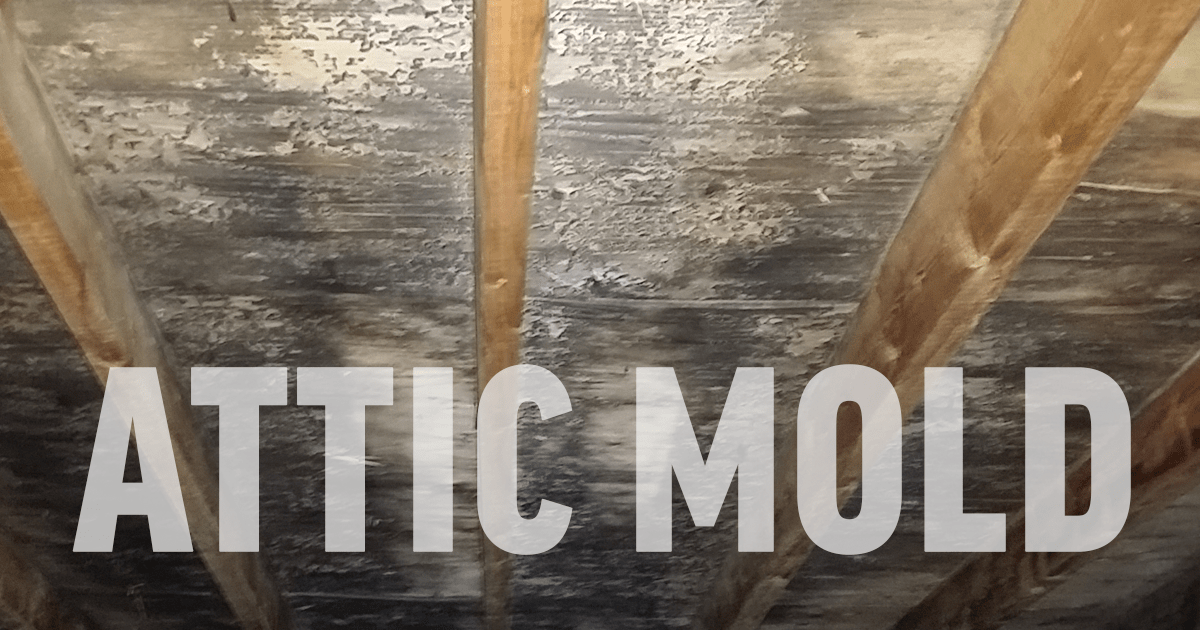Attic Mold Inspection Services
If not properly addressed, attic mold can lead to various complications, ranging from health concerns to structural damage in your attic. After enduring a lengthy Midwest winter, conducting an annual attic inspection is the ideal way to detect existing mold or conditions that may encourage mold growth.
The Hidden Threat: Attic Mold
Many homeowners are caught off guard when they discover mold in their attics. Since most people don’t frequently access their attics, mold is often only detected during professional home inspections when a house is being sold or marketed. Attic mold can be a deal-breaker or, at the very least, delay a sale until proper remediation is completed.
Understanding Mold Origins
Mold exposure is a common occurrence in everyday life. Mold spores can be found both indoors and outdoors. While outdoor mold spores rarely pose a problem, mold issues arise when spores accumulate in confined indoor spaces, such as an attic.
Mold can thrive on a wide range of surfaces, including wood, metal, plastic, fabric, and paper products. It proliferates in environments with ample moisture, relatively stable temperatures, and organic matter like dust, paper, wood, or cotton, which serves as a food source.
Diverse Mold Species
There are countless mold species, some harmless and others potentially hazardous. Identifying a specific mold species with the naked eye is impossible; accurate identification requires microscopic examination or laboratory testing. As a result, we strongly advise against DIY attic mold removal. Despite popular belief, bleach is not an effective long-term mold remediation solution.
The Rapid Spread of Attic Mold
Given the right conditions, mold can spread quickly. Unaddressed mold may even infiltrate living areas below the attic. Mold spores in the attic can also compromise indoor air quality, exacerbating conditions for individuals with asthma, allergies, or weakened immune systems.
Top 5 Causes of Attic Mold
- Inadequate or Absent Attic Ventilation: Attics require proper ventilation to replace stagnant air with fresh outdoor air.
- Insufficient or Improper Attic Insulation: Incorrect or poorly installed insulation can trap moisture from living spaces in the attic.
- Roof Leaks: Moisture from leaks can accumulate and promote mold growth.
- Dryer & Bathroom Fans Venting into the Attic: Warm, moist air can create condensation on attic surfaces.
- Ice Dams: Overflow from snowmelt due to frozen gutters can seep into the attic.
The Central Issue: Attic Moisture
All of the above causes share a common factor – attic moisture. Without moisture, mold cannot grow. Therefore, we highly recommend inspecting your attic for moisture at least once, if not twice, per year. Early detection can significantly reduce the damage mold can cause.
Identifying Attic Mold
Attic mold may not resemble the mold found on food. It typically appears as dark brown or various shades of gray stains on wood surfaces or as a white, light gray, or greenish-gray powdery substance on other surfaces. Mold is often accompanied by mildew and a distinct “musty” odor.
Complimentary Attic Mold Evaluations
Unsure if your attic has mold? If you reside in Chicago or the surrounding suburbs, contact us for a free attic evaluation. Our thorough attic mold inspection encompasses insulation, ventilation, and air gap assessments. We examine signs of mold, moisture accumulation, and any indications of attic infestation at no cost to you!


